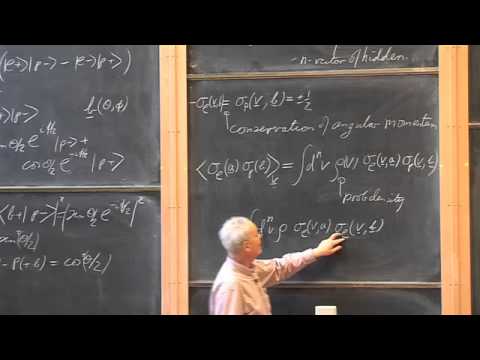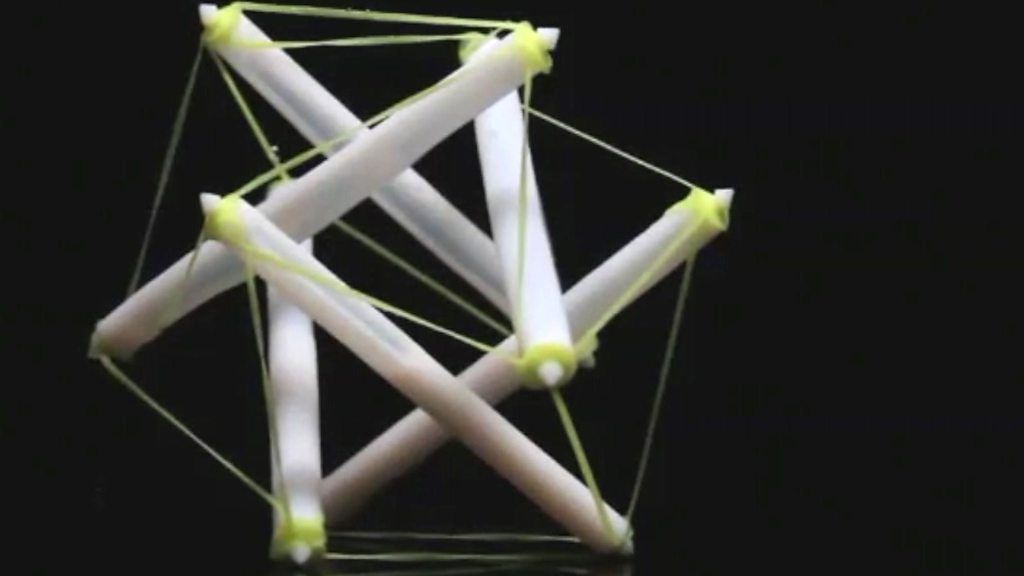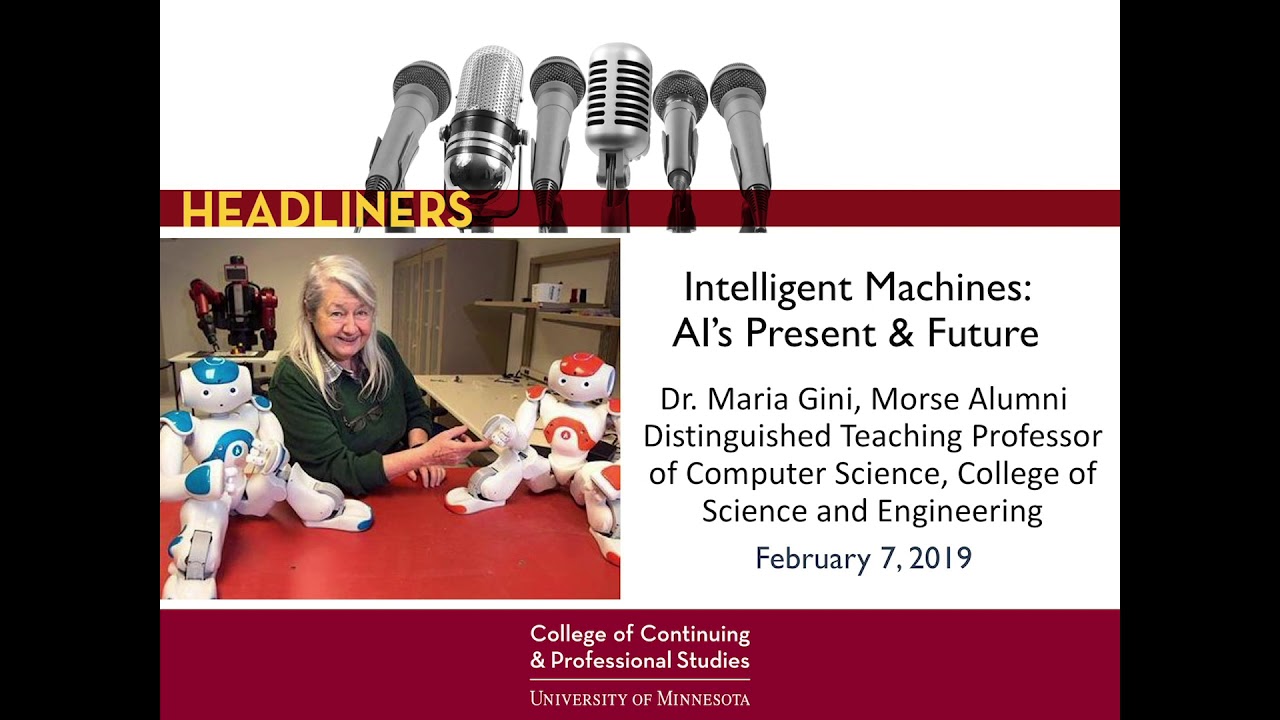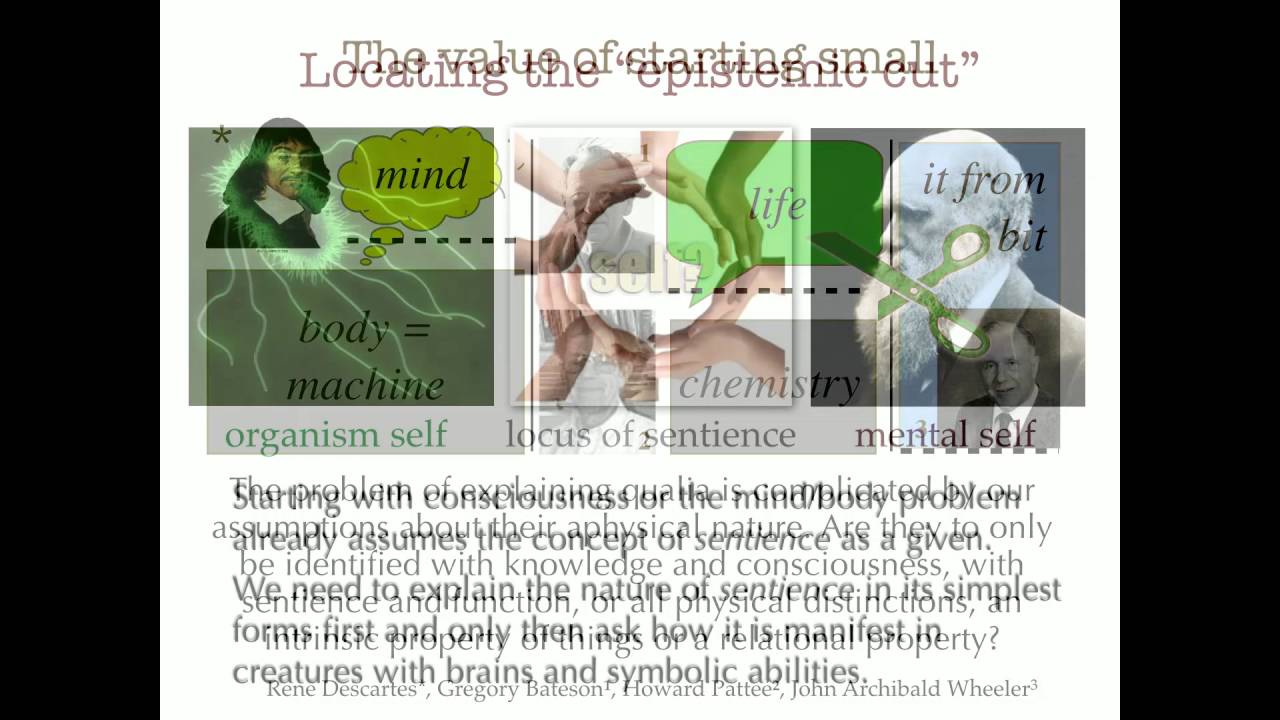University of Oxford
In this series of physics lectures, Professor J.J. Binney explains how probabilities are obtained from quantum amplitudes, why they give rise to quantum interference, the concept of a complete set of amplitudes and how this defines a “quantum state”.
Notes and problem sets here
http://www-thphys.physics.ox.ac.uk/people/JamesBinney/lectures.html
Source




Great Lecture! Question: How long does a point particle take to go back into a wave state after an observation?
Alice and Bob is quite a couple.If You look at the posibilities ,the amount is 8. Witch give the posibilityrate of
33% that Bob recieve the spindorektion expected . Einstein never knew he was right …Right ?
the explanation in minute 47 is perfect for understanding that it doesn't violate special relativity, no signal is sent from Alice to Bob.
Where is the negative part of the equation from 19:53 coming from?
Damn, he missed the opportunity to address some interesting topics at the end. For example, there's no violation of causality since for Bob to know what his result would be beforehand Alice would have to tell him (through causal communication) what axis she chose to make the measurement in. There's also the question of whether the particles have or don't have assigned values of spin before measured (which leads to the broader question of realism inside QM's framework, which could be further discussed. Do the violations of Bell's inequalities invalidate realism?). And further, there's the assumption that Alice and Bob had free will to decide on what direction to measure the spin. It's ironic that by assuming free will (in the sense that their decisions are not influenced by events in their past light cones) of the observers, which is not compatible at all with a more deterministic point of view, PDR ended up concluding QM should be deterministic. Well, these are just some more conceptual topics around Bell's inequalities that I think are worth mentioning.
The hidden variable, v, could, in general, be a time-varying function. That is, one particle, heading off in the +x direction, might be governed by v(x,t) while its twin, heading off in the -x direction would be governed by v(-x,t). If there is a common master clock, t, such that the twin particles age in perfect phase-locked synchrony, then I can see how v(+x,t) could algebraically cancel out v(-x,t) somewhere in the middle of Bell's derivation.
But if one admits that there is no common master clock, then one would have to reckon that v(x,•) is not a perfect mirror image of v(-x,•). It occurs to me that the math has to somehow show that this does not throw a monkey wrench into the derivation.
In other words, why isn't time itself the not-so-hidden variable?
grazie
I was wondering whether Professor Binney knowingly omitted the word "local" before every occurrence of the phrase "hidden variables"? I was under the impression that Bell showed QM to be inconsistent with local hidden variables theories. QM is, however, entirely consistent with nonlocal hidden variables, such as Bohmian mechanics. Bell was quite vocal on this distinction.
What would be wrong with giving he lectures in an order where electron spin does NOT need to be taken on trust?
I first heard about this from Big Bang Theory (TV show).
If hidden variables is another way to describe probability theory, how probability theory could contradict itself? If spin does not completely determine the state of the system, why it is a function of hidden variables, perhaps it is an operator acting on a function of hidden variables?
i am viewing of this amazing lecture and try to understand
Probably a junior year course at U.S. universities.
That's no mistery. The mistery is that Alice can collapse the wave function of Bob's positron without physically interfering with it.
Alice in Wonderful.
Hi, @ James Clavell. This is a second-year course, so the audience will have had a bit more physics training, yes. Hope you still found it interesting!
The nihilists are right regardless!
He speaks too slowly and takes too many pauses, dont u think?
Been trying to understand this for years, still struggling! Youtube to the rescue …
If the multiverse is real, wouldn't that mean the Nihilists are right?
very good lecture!
Why don't we just abandon the copenhagen interpretation and have done with it?
I don't understand how the hidden variables assumption is relevant in this case. Alice and Bob are each free to choose the direction of their measurement. The hidden variables, assumed "attached" to the particles-system, are not claimed to affect free-will, but only to keep some kind of sync between the two particles. So even if there are hidden variables, they can have nothing to do with the angle between the a,b vectors. What am I missing?
I like Professor Binney's personality. It's both confident and comfortable, a combination in teaching that I sometimes wish my university professors would have shared.